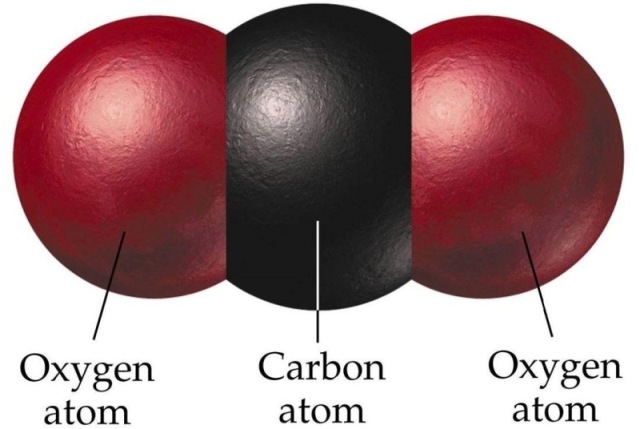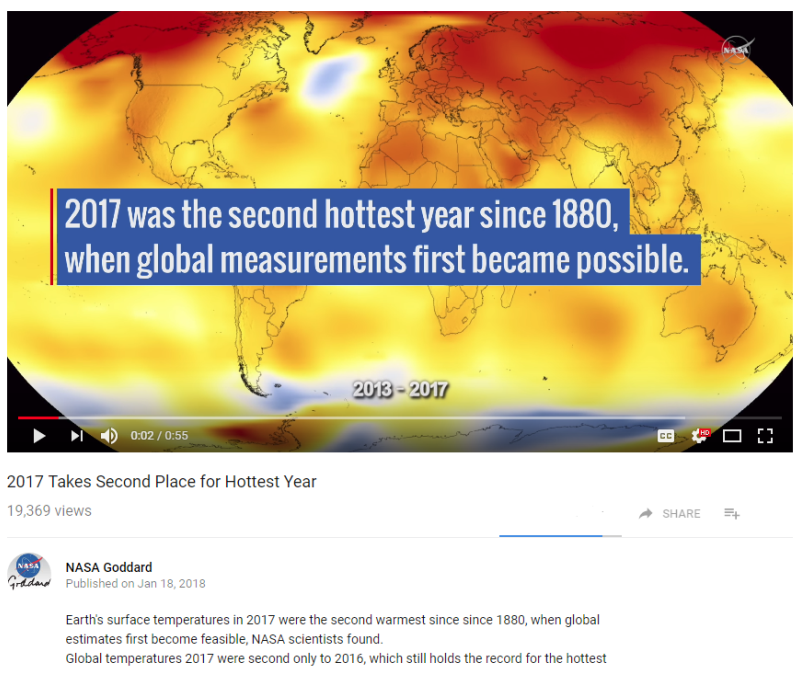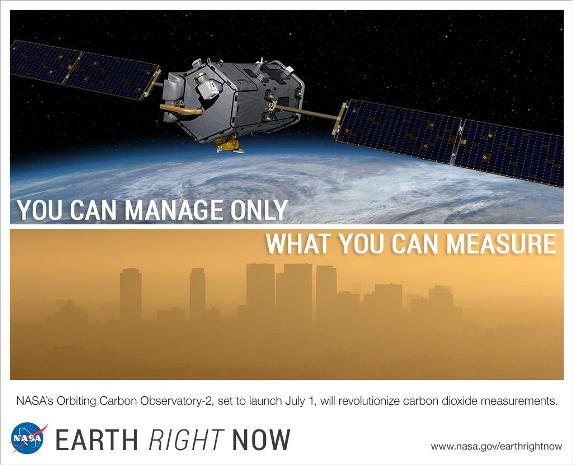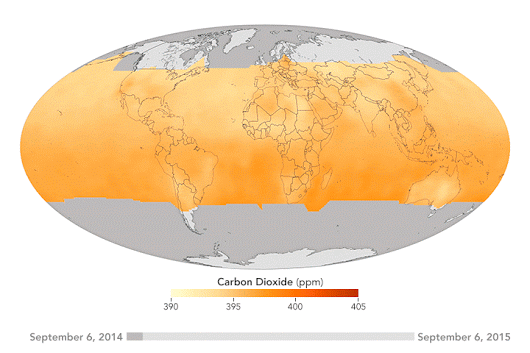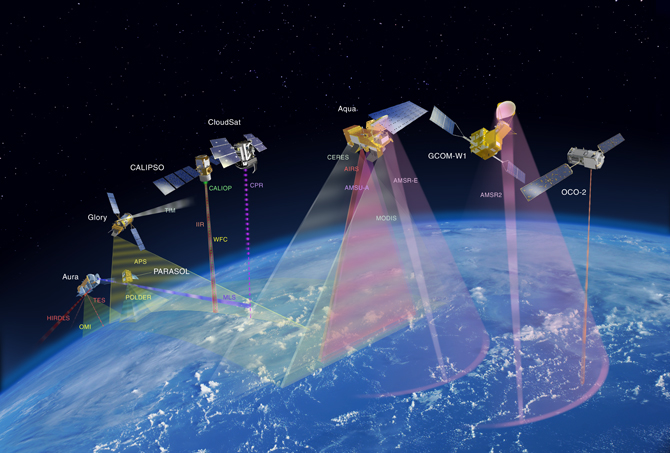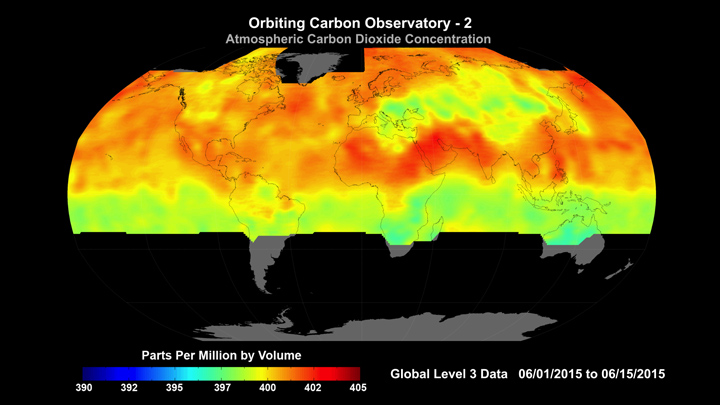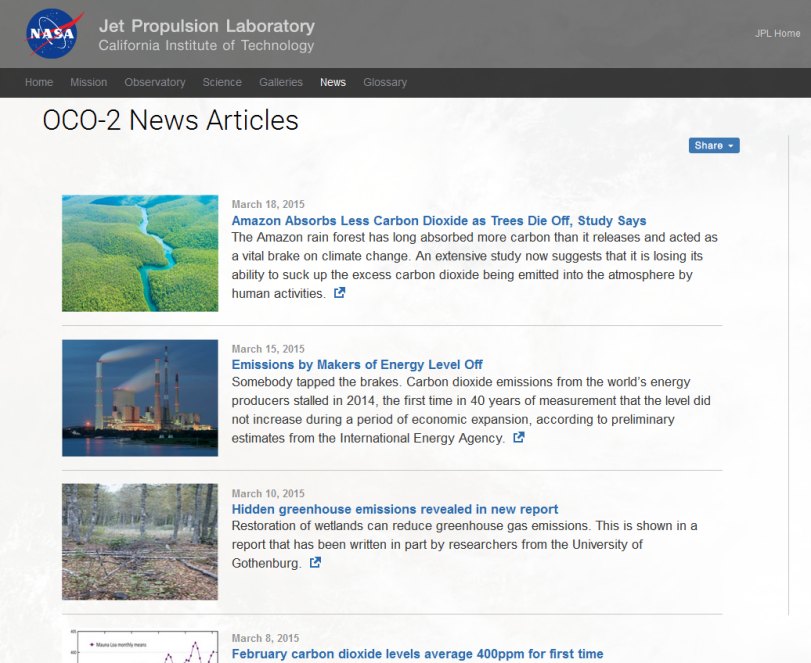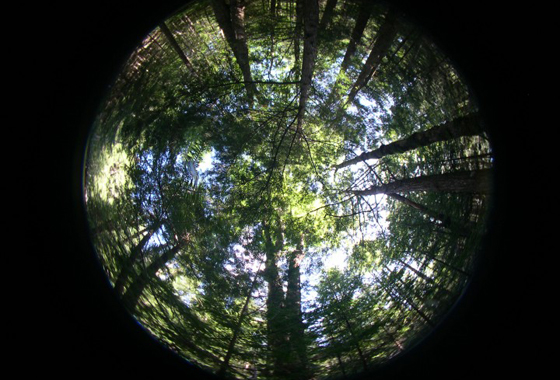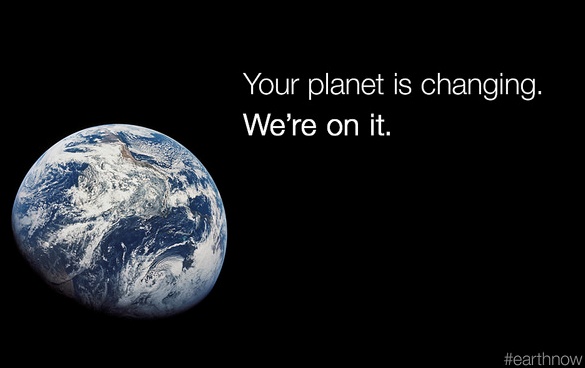OCO-2
Atmospheric Science
Updates:
2018
Via Ars Technica, Wired Media Group
Op-ed: The story behind the satellite that Trump wants dead
It’s difficult to describe all the ways this is stupid
- The Orbiting Carbon Observatory's primary job is to see what's happening to the carbon dioxide levels in our atmosphere.
There were plenty of striking things about February 12th's budget news, given that it contained lots of draconian cuts that were simultaneously restored because Congress had boosted spending the week before. But perhaps the most striking among them was an item in the proposed budget for NASA: Trump wants to block the follow on to a highly successful NASA mission.
To truly appreciate just how awful this is, you have to understand the history of that satellite and what it means to the scientific community as a whole. So let's step back and take a look at why the Orbiting Carbon Observatory (or OCO) exists in the first place. It turns out it was built specifically to handle some outstanding questions of the sort that people in the administration say are important, and killing its successor would mean the existing mission never lives up to its full potential.
- ···················································································
With optimism, even as the current US administration cuts back earth science research and OCO-2 / OCO-3 missions are now at risk, we continue to point to the critical security role science research from space has in securing national and global security.
Follow orbiting observatory missions here:
- ································································································
A new NASA study provides space-based evidence that Earth’s tropical regions were the cause of the largest annual increases in atmospheric carbon dioxide concentration seen in at least 2,000 years...
The findings are published in the journal Science Friday as part of a collection of five research papers based on OCO-2 data.
Carbon Dioxide and OCO-2 Data: Earth Science that Counts
- NASA OCO-2, critical measurements, critical mission -- https://svs.gsfc.nasa.gov/12478
- Carbon dioxide (CO2) is the most important greenhouse gas released to the atmosphere through human activities...
NASA Media / "Following Carbon Dioxide Through the Atmosphere" | https://www.youtube.com/watch?v=syU1rRCp7E8
- The OCO-2 mission greatly expands the ability to observe atmospheric carbon dioxide. OCO-2 collects high-precision, total column measurements of carbon dioxide (from the sensor to Earth’s surface) during daylight conditions.
- Scientists can use model results to understand and predict where carbon dioxide is being emitted and removed from the atmosphere and how much is from natural processes and human activities.
- OCO-2's unprecedented science is "a step toward answering critical questions about carbon dioxide and Earth's climate future."
- ······································
········································
Via the LA Times / Oct 2017
How NASA tracks carbon emissions from space to better understand — and deal with — climate change
Global temperatures have been on the rise, thanks largely to the human-driven increase in greenhouse gases like carbon dioxide. But not all of the carbon dioxide produced each year ends up in the atmosphere. Some of it ends up trapped in the ocean, or locked on land thanks to plants that use the gas during photosynthesis.
“We know how much we’re emitting when we burn fossil fuel, and we see that about half of it stays in the atmosphere and the other half appears to go get absorbed into the land and the ocean,” said Jet Propulsion Laboratory (JPL) atmospheric scientist Annmarie Eldering, the mission’s deputy project scientist. “But there are still these questions of which parts of the land are doing that.”
Orbiting Carbon Observatory-2, or OCO-2, was launched in July 2014 to help discover those mechanisms and solve that mystery...
“Now we can see that the tropical forest and plants didn’t absorb as much carbon as they usually do and that’s what caused this big increase in that time period,” Eldering explains.
Drought and higher temperatures have been linked to the climate change fueled by greenhouse gases. Now, it seems that there could be a vicious cycle at work.
“The projections of climate suggest there will be more heat and there will be more drought in the future,” Eldering says. “This would suggest that with more warmth and more heat, we’ll have more carbon left in the atmosphere, so that would even accelerate the growth rate of carbon dioxide.”
The results should help experts develop more effective strategies to deal with climate change in the future.
“If you want to make a good plan, you’ve got to have some good information,” she says. “This is going to add to that information, and hopefully be reflected in a better plan down the road.”
The findings come a few months after President Trump’s budget plan proposed to cut OCO-3, a follow-up mission that would continue OCO-2’s work.
- More at Climate News
- ○ ○ ○ ○ ○ ○ ○ ○ ○○ ○ ○ ○ ○ ○ ○
- OCO-2 / Orbiting Carbon Observatory Mission
Tracking the Status of OCO-3 and Science of OCO-2
Trump administration budget puts NASA earth science and OCO-3 in jeopardy
Climate deniers blame global warming on nature. This NASA data begs to differ
Earth atmosphere emission data begins to be made available -- Sept 2015
OCO-2 "Game Changing" Earth Science
New Definitions of National Security
○ ○ ○ ○
2015
Mission Reports
The Orbiting Carbon Observatory (OCO-2) team refines mission... OCO-2 will orbit closer to CloudSat and CALIPSO in the Afternoon "A-Train" of Earth-circling satellites.
OCO-2 research team changes of OCO-2 orbit to enable pairing up one million daily measurements of carbon dioxide made by OCO-2 with cloud and aerosol measurements made by the other A-Train satellites.
Instrument calibration and data reprocessing updates result in improved visualizations of how carbon is moving around the planet, as baseline data is gathered and studied.
"Planet citizens/planet scientists" can now enter and utilize the Earth Observation open access database.
-=-=-=-=-=-=-=-=-
March/April 2015
http://www.nasa.gov/mission_pages/oco2/index.html
-=-=-=-=-=-=-=-=-=-=-=-=-=-=-=-=-=-=-=-=-=-=-=-=-=-=-=-
February 2015
December 2014
Historic Orbiting Carbon Observatory Satellite Sends Back Most Detailed CO2 View Ever / Dec 18, 2014
The 'Initial Level 1 round' of data was made available to the public on Dec 30, 2014.
A full Level 2 set of CO2 data was made available in March for scientists and the public "planet citizens" to download and explore.
○
October
September
August
August 13th/Climate Central news report of first data
July 2, 2014
NASA Launches New Carbon-Sensing Mission to Monitor Earth’s Breathing
"Climate change is the challenge of our generation," says NASA Administrator Charles Bolden.
Follow the tweets of the OCO-2 bird
OCO-2, a "game changer"... Follow the NASA climate blog
"Game changing" science Unraveling mysteries
_______________________________________
Observing Global Warming with #OCO-2
Historic launch #PlanetCitizen mission to study #EarthsAtmosphere
"First Light!" [1] [2] OCO-2 announces 'We have data!'
OCO-2 tweets - https://twitter.com/IamOCO2
What monitoring a potential existential crisis looks like...spectra from #OCO-2 #Earth360
Earth observing satellites, Orbiting Carbon Observatory the "Afternoon Constellation", the "A-Train" joined by #OCO-2 newly launched and historic in its mission to study global warming
"Watching the Earth Breathe from Space"
About the Earth Observatory Mission
○ ○ ○ ○
https://oco.jpl.nasa.gov/mission/quickfacts/
The OCO-2 Project primary science objective is to collect the first space-based measurements of atmospheric carbon dioxide with the precision, resolution and coverage needed to characterize its sources and sinks and quantify their variability over the seasonal cycle. During its two-year mission, OCO-2 will fly in a sun-synchronous, near-polar orbit with a group of Earth-orbiting satellites with synergistic science objectives whose ascending node crosses the equator near 13:30 hours Mean Local Time (MLT). Near-global coverage of the sunlit portion of Earth is provided in this orbit over a 16-day (233-revolution) repeat cycle. OCO-2’s single instrument incorporates three high-resolution grating spectrometers, designed to measure the near-infrared absorption of reflected sunlight by carbon dioxide and molecular oxygen.
Further objectives include:
- Retrieve estimates of the column-averaged carbon dioxide dry air mole fraction (XCO2) on regional scales (1,000 kilometers or greater) from space-based measurements of the absorption of reflected sunlight by atmospheric carbon dioxide and oxygen, collected in cloud-free scenes at least 80 percent of the range of latitudes on the sunlit hemisphere at monthly intervals for two years.
- Compare space-based and ground-based XCO2 retrievals from soundings collected during overflights of three or more primary ground validation sites at least once each season to identify and correct global-scale systematic biases in the space-based XCO2 product and to demonstrate a precision of 0.3 percent or less for collections of 100 or more cloud-free soundings.
- Record, validate, publish and deliver science data records and calibrated geophysical data products to the Goddard Earth Sciences Data and Information Services Center for use by the scientific community.
- Validate a space-based measurement approach and analysis concept that could be used for future systematic carbon dioxide monitoring missions.
Overview of key mission goals for OCO's atmospheric science:
Message One: The burning of fossil fuels and other human activities are currently adding more than 36 billion tons of carbon dioxide to the atmosphere each year, producing an unprecedented buildup in this important greenhouse gas. OCO-2 provides a new tool for understanding the sources of carbon dioxide emissions and how they are changing over time.
Message Two: Less than half of the carbon dioxide emitted into the atmosphere by human activities stays there. The location and identity of the natural “sinks” that are absorbing the rest of this carbon dioxide are currently not well understood. OCO-2 will help solve this critical scientific puzzle.
Sub-message: Knowing what parts of Earth are helping remove carbon from the atmosphere will help us understand if they will keep doing so in the future. OCO-2 measurements will help scientists construct better models to predict how much carbon dioxide these sinks will be able to absorb in the future.
Message Three: The innovative technologies incorporated into OCO-2 will enable space-based measurements of carbon dioxide with the sensitivity, resolution and coverage needed to understand human and natural sources of carbon dioxide emissions and the natural sinks that control its buildup, at regional scales, everywhere on Earth.
Sub-message: To control carbon dioxide in our atmosphere, we need to be able to measure it. We can only manage what we can measure.
Message Four: OCO-2 will help assess the usefulness of space-based measurements of carbon dioxide for managing emissions of this important greenhouse gas.
__________________________________________________
With launch of OCO-2, a "game changer", #Earth360 science will grow in unprecedented ways
#Earthdata enables informed decisions and policy
"You can manage only what you can measure"
File:Good science needs good data.png
- ____________________________________________
#EarthScience data is coming in and being openly distributed
Be a Planet Citizen, a Citizen Scientist
Use your digital tools as a Planet Scientist and Citizen
Take up the challenge with NEX and #OpenSource and #PlanetAPI ventures available for the first time
NASA NEX Earth Sciences Asks the Public to Join In
Add your #PlanetCitizen talent to a future of seeing with an #EarthPOV
______________________________________________
NASA's 'Eyes on the Earth' Gets Sharper Vision
NASA's Eyes Monitor Our Planet's Vital Signs
○
- Pages with broken file links
- Atmospheric Science
- Anthropocene
- Atmosphere
- Ecology Studies
- EOS eco Operating System
- Sustainability
- Sustainability Policies
- Biosphere
- Digital Citizen
- Earth360
- Earth Observations
- Earth Science
- Eco-nomics
- Education
- Environmental Full-cost Accounting
- Environmental Security
- Environmental Security, National Security
- Global Security
- Global Warming
- NASA
- National Security
- New Definitions of National Security
- New Space
- Planet Citizen
- Planet Scientist
- Planet Citizens, Planet Scientists
- Planet API
- Strategic Demands
- ThinBlueLayer
- Whole Earth
- Climate Change
- Climate Policy
- Arctic
- Cryosphere
- Geophysics and Geochemistry
- Geophysics
- Hydrology
- Natural Resources
- Ocean Science
- Planetary Science
- Space Science and Space Physics
